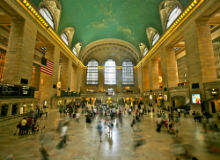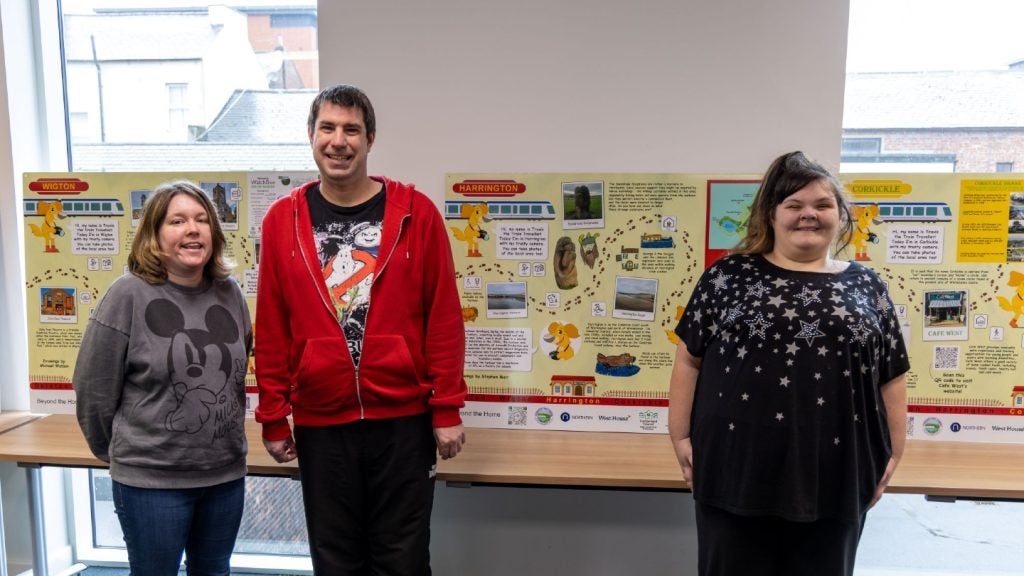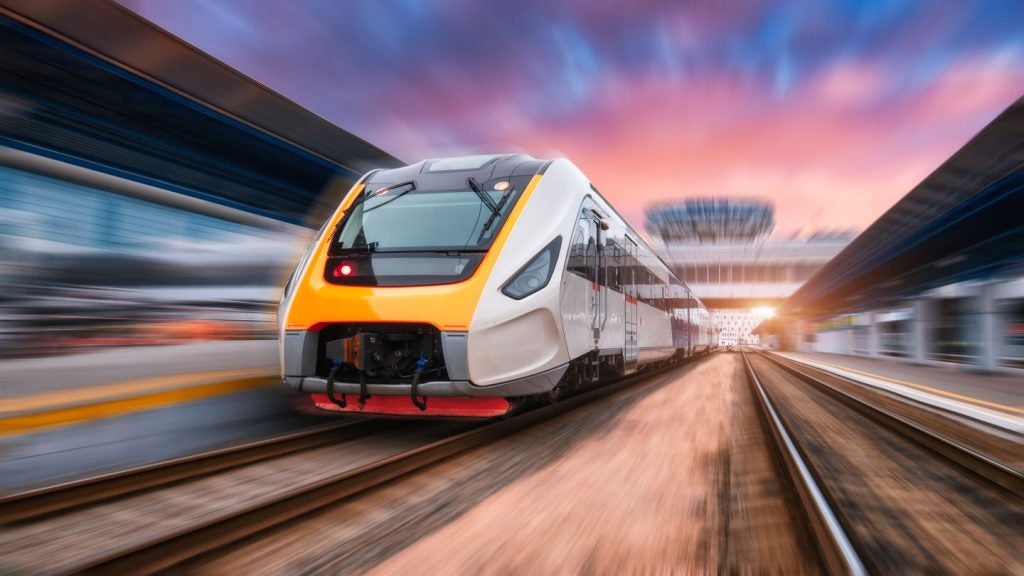
Receiving increasing numbers of passengers who desire an ever-evolving experience, railway stations have to adapt to the future. However, while modern stations are, more often than not, impressive glass and steel structures, there are plenty of iconic and historic buildings that have stood the test of time.
Grand Central Terminal, New York

One of the Big Apple‘s most famous landmarks, Grand Central Terminal officially opened in February 1913, ten years after construction began, at a cost of more than $2bn in today’s money.
At the time, it was New York’s largest construction project ever, with 32 miles of track connecting to 46 tracks and 30 platforms. It was also one of the world’s first all-electric buildings.
Currently, Grand Central has 44 platforms and the main concourse is 275ft long, 120ftwide and 125ft high. Its architectural grandeur, including the ceiling decorated with the signs of the zodiac, has long been celebrated, with historian David Cannadine describing it as "one of the 20th century’s most elaborate and majestic buildings".
See Also:
The threat of demolition first presented itself in the 1950s, when railroad companies were fast losing money. However, a public campaign successfully ensured the continuation of Grand Central as a transport hub.
How well do you really know your competitors?
Access the most comprehensive Company Profiles on the market, powered by GlobalData. Save hours of research. Gain competitive edge.

Thank you!
Your download email will arrive shortly
Not ready to buy yet? Download a free sample
We are confident about the unique quality of our Company Profiles. However, we want you to make the most beneficial decision for your business, so we offer a free sample that you can download by submitting the below form
By GlobalDataThis was followed by a refurbishment period, and the station was returned to its former glory. Works included the restoration of the main concourse ceiling, an overhaul of the terminal’s superstructure and the installation of a purely electronic arrival/departure display board.
Developers SL Green has also announced plans to invest $210m in renovations, as part of plans for the 65-storey One Vanderbilt tower, west of Grand Central Terminal.
Chhatrapati Shivaji Terminus, Mumbai

Designated a UNESCO World Heritage Site, the Chhatrapati Shivaji Terminus (CST) in Mumbai, India, was built in 1888 in a lavish Victorian-Gothic style.
It was formerly known as the Victoria Terminus, commemorating the Golden Jubilee of Queen Victoria.
According to UNESCO, the station serves three million commuters daily, and provides both long-distance trains and commuter services of the Mumbai Suburban Railway. It is also the headquarters of the Central Railway, one of the largest Indian railway zones.
Much of CST’s importance is down to the fact that it connects central Mumbai with the residential outskirts, providing a crucial link to the business hub of the city.
With the level of use, efforts are underway to ensure CST does not fall into a state of decay. A long-term management plan was announced in 1997 by Indian Railways, including restoration to the terminal, as well as managing nearby traffic.
The Mumbai Metropolitan Regional Development Authority is also working on the Mumbai Urban Transportation Plan, which aims to revolutionise the transport network.
Gare du Nord, Paris

The original Gare du Nord opened in 1846, but was soon replaced by a larger station in 1864.
The station is the busiest in Europe, serving approximately 190 million a year and 700,000 every day. It includes 43 platforms – both underground and overground.
It provides international travel, connecting to Belgium, Germany, the Netherlands and the UK.
In recent times, the station has been criticised, with John Lewis’ Andy Street saying: "You get on the Eurostar from something I can only describe as the squalor pit of Europe, Gare du Nord, and you get off at a modern, forward-looking station, St Pancras [UK]."
Now, in an effort to restore the integrity of Gare du Nord, the SNCF, France’s national state-owned railway company, has announced an eight-year, complete overhaul.
The plans include expanding the station at a cost of "hundreds of millions of euros", according to the SNCF.
The underground platforms will be rebuilt, while the Eurostar terminal will undergo a redesign.
"The Gare du Nord is a 19th century station which didn’t struggle though the 20th century very well and needs to be brought up to the standards of the 21st century," said SNCF chief Guillaume Pepy.
St Pancras, London

St Pancras opened in 1868, two years after construction began and featuring a William Barlow-inspired Victorian-era design. It was constructed by the Midland Railway Company to connect London with other major cities.
When it opened, services ran to Manchester, Liverpool, Leeds and Bradford, and, from 1876 onwards, to Edinburgh.
St Pancras was saved from demolition in the 1960s, becoming a Grade 1 listed building in 1967, just ten days before it was due to be demolished. However, by the 1990s it was in need of refurbishment.
In 2007, a major rebuilding programme costing £800m was completed. Starting in 2004, the station had to be doubled in length and six new platforms were added.
In November 2007, the station was officially reopened and the Eurostar service introduced.
Today, it is used by approximately 45 million passengers annually and serves as a gateway to Europe.
Chicago Union Station, Chicago

Union Station was opened to the public in 1925, replacing the Union Depot that had been built on the same site.
Located on the west side of the Chicago River, it is the third-busiest rail terminal in the US and Amtrak’s fourth-busiest station, serving around 120,000 passengers a day.
Union Station was classed as one of the country’s "Great Places" by the American Planning Association in 2012, highlighting its historical significance.
Since 2010, the City of Chicago’s Department of Transportation has been studying ways to accommodate predicted future growth in rail use. This ‘Union Station Master Plan’ identifies potential ideas for adding tracks and platforms and improving passenger flow, and will use simulation models to assist with this.
Medium-term goals include widening four platforms. One of the potential long-term ideas under this master plan involves expanding or replacing the intercity and/or commuter station facilities.
In January 2015, it was also announced that Amtrak will invest $12m to redesign their concourse areas, which they hope will redirect passengers to avoid congestion.
The company also plans to renovate the marble staircase at the Canal Street entrance and add restaurants as well as other passenger services.
Antwerpen-Centraal, Belgium

Antwerpen-Centraal, considered one of the most beautiful stations in the world, was built between 1895 and 1905, and replaced the original terminus of the Brussels-Mechelen-Antwerp Railway.
The station, built with 20 different types of marble, consists of four levels and 14 tracks, and is nicknamed the ‘Railway Cathedral’.
During World War Two, Antwerpen-Centraal’s train hall was badly damaged by V2 bombs, but managed to stay intact.
In 1986, restoration work began on the train hall roof, and twelve years later capacity expansion got underway.
Part of this included changing it from a terminus into a through station, with a tunnel excavated between Berchem station in the south of the city and Antwerpen-Dam station in the north. In March 2007, the new railway tracks at tunnel level were opened for service.
This work allowed high-speed trains to travel through the station without the need to turn around.
More than 50,000 passengers pass through each day.





